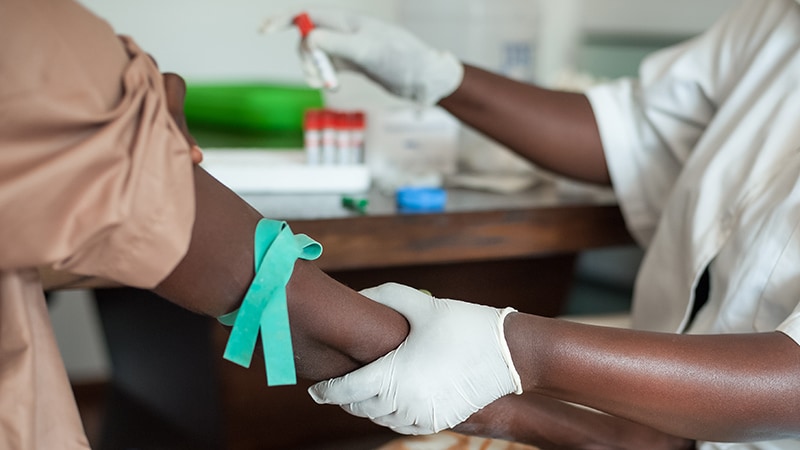People with hypothyroidism show significantly higher levels of small intestinal bacterial overgrowth (SIBO) and key bacterial distinctions than those without the thyroid condition, according to results of a study.
“[The research] supports the idea that improving gut health could have far-reaching effects beyond digestion, possibly even helping to prevent autoimmune diseases, such as Hashimoto thyroiditis,” said senior author Ruchi Mathur, MD, director of the Diabetes Outpatient Treatment and Education Center and director of Clinical Operations of Medically Associated Science and Technology, at Cedars-Sinai in Los Angeles, in a press statement for the study, which was presented at ENDO 2025: The Endocrine Society Annual Meeting.
“These findings open the door to new screening and prevention strategies,” Mathur added. “For example, doctors may begin to monitor thyroid health more closely in patients with SIBO, and vice versa.”
With some small studies previously suggesting an association between the gut microbiome and hypothyroidism, Mathur and colleagues further explored the relationship in two analyses.
Assessing the Role of the Small Bowel
For the first, they evaluated data on 49 patients with Hashimoto thyroiditis (HT) and 323 controls without the condition from their REIMAGINE trial, which included small bowel fluid samples from upper endoscopies and DNA sequencing.
In the study, all patients with HT were treated with thyroid replacement (levothyroxine), hence, there were notably no significant differences between the two groups in terms of thyroid stimulating hormone (TSH) levels.
Despite the lack of those differences, patients with HT had a prevalence of SIBO more than twice that of the control group, independent of gender (33% vs 15%; odds ratio, 2.71; P = .005).
When the two groups were further subdivided into two groups each — those with and without SIBO — significant further variations of microbial diversity were observed between those with and without HT, Mathur told Medscape Medical News.
“Interestingly, we saw the small bowel microbiome was not only different in SIBO-positive patients, including higher gram negatives, which is to be expected, but that the presence or absence of hypothyroidism itself was associated with specific patterns of these gram-negative bacteria,” she explained.
“In addition, when we looked at hypothyroidism without SIBO present, there were also changes between groups, such as higher Neisseria in the hypothyroid group.”
“All these findings are novel as this is the first paper to look specifically at the small bowel,” she added, noting that previous smaller studies have focused more on evaluation of stool samples.
“We believe the small bowel is the most metabolically active area of the intestine and plays an important role in metabolism,” Mathur noted. “Thus, the microbial changes here are likely more physiologically significant than the patterns seen in stool.”
Further Findings from a Large Population
In a separate analysis, the team evaluated data from the TriNetX database on the 10-year incidence of developing SIBO among 1.1 million subjects with hypothyroidism in the US compared with 1 million controls.
They found that people with hypothyroidism were approximately twice as likely to develop SIBO compared with those without hypothyroidism (relative risk [RR], 2.20).
Furthermore, those with HT, in particular, had an even higher risk, at 2.4 times the controls (RR, 2.40).
Treatment with levothyroxine decreased the risk of developing SIBO in hypothyroidism (RR, 0.33) and HT (RR, 0.78) vs those who did not receive treatment.
Mechanisms?
However, the fact that differences in SIBO were observed even between people who were treated for HT and those without the condition in the first analysis, and hence had similar TSH levels, was notable, Mathur.
“This suggests that perhaps there are other factors aside from TSH levels and free T4 that are at play here,” she said.
“Some people have theorized that perhaps delayed gut motility in hypothyroidism promotes the development of SIBO; however, there are many other factors within this complex interplay between the microbiome and the thyroid that could also be playing a role.”
“For example, SIBO leads to inflammation and weakening of the gut barrier,” Mathur explained.
Furthermore, “levothyroxine absorption and cycling of the thyroid hormone occurs predominantly in the small bowel, [while the] microbiome plays a key role in the absorption of iron, selenium, iodine, and zinc, which are critical for thyroid function.”
Overall, “further research is needed to understand how the mechanisms are affected during the development of SIBO and hypothyroidism,” Mathur said.
Assessment of Changes Over Time Anticipated
Commenting on the research, Gregory A. Brent, MD, senior executive academic vice-chair of the Department of Medicine and professor of medicine and physiology at the David Geffen School of Medicine at University of California Los Angeles said the study is indeed novel.
“This, to my knowledge, is the first investigation to link characteristics of the small bowel microbiome with hypothyroidism,” Brent told Medscape Medical News.
While any clinical significance has yet to be determined, “the association of these small bowel microbiome changes with hypothyroidism may have implications for contributing to the onset of autoimmune hypothyroidism in susceptible populations as well as influences on levothyroxine absorption in hypothyroid patients on levothyroxine therapy,” Brent said.
With the SIBO differences observed even among treated patients with vs without HT, “it seems less likely that the microbiome changes are the result of reduced thyroid hormone signaling,” Brent noted.
Furthermore, a key piece of the puzzle will be to observe the microbiome changes over time, he added.
“These studies were at a single time point [and] longitudinal studies will be especially important to see how the association changes over time and are influenced by the treatment of hypothyroidism and of SIBO,” Brent said.
The authors and Brent had no disclosures to report.









